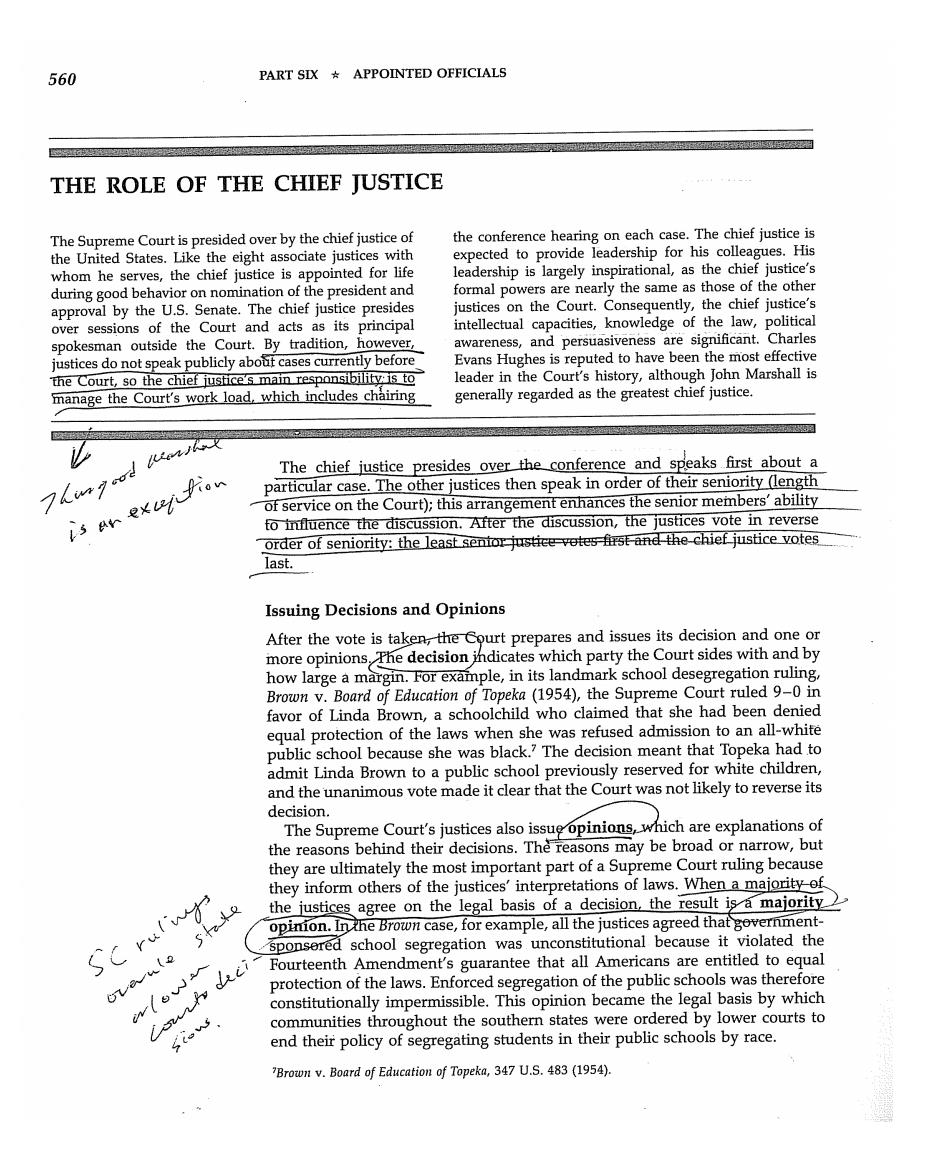正在加载图片...

560 PART SIX APPOINTED OFFICIALS THE ROLE OF THE CHIEF JUSTICE The Supreme Court is presided over by the chief justice of the conference hearing on each case.The chief justice is the United States.Like the eight associate justices with expected to provide leadership for his colleagues.His whom he serves,the chief justice is appointed for life leadership is largely inspirational,as the chief justice's during good behavior on nomination of the president and formal powers are nearly the same as those of the other approval by the U.S.Senate.The chief justice presides justices on the Court.Consequently,the chief justice's over sessions of the Court and acts as its principal intellectual capacities,knowledge of the law,political spokesman outside the Court.By tradition,however, awareness,and persuasiveness are significant. Charles justices do not speak publicly about cases currently before Evans Hughes is reputed to have been the most effective the Court,so the chief justice's main responsibility:is to leader in the Court's history,although John Marshall is manage the Court's work load,which includes chairing generally regarded as the greatest chief justice. The chief justice presides over the conference and speaks first about a particular case.The other justices then speak in order of their seniority (length of service on the Court);this arrangement enhances the senior members'ability fo influence the discussion.After the discussion,the justices vote in reverse order of seniority:the least senior justice-votes-first and the chief justice votes last. Issuing Decisions and Opinions After the vote is taken,the Court prepares and issues its decision and one or more opinions,The decision indicates which party the Court sides with and by how large a margin.For example,in its landmark school desegregation ruling, Brown v.Board of Education of Topeka(1954),the Supreme Court ruled 9-0 in favor of Linda Brown,a schoolchild who claimed that she had been denied equal protection of the laws when she was refused admission to an all-white public school because she was black.?The decision meant that Topeka had to admit Linda Brown to a public school previously reserved for white children, and the unanimous vote made it clear that the Court was not likely to reverse its decision. The Supreme Court's justices also issue opinions,which are explanations of the reasons behind their decisions.The reasons may be broad or narrow,but they are ultimately the most important part of a Supreme Court ruling because they inform others of the justices'interpretations of laws.When a majority of 9 the justices agree on the legal basis of a decision,the result is a majority opinion.In the Brown case,for example,all the justices agreed that government- sponsered school segregation was unconstitutional because it violated the oLeule 久ci Fourteenth Amendment's guarantee that all Americans are entitled to equal protection of the laws.Enforced segregation of the public schools was therefore Couh constitutionally impermissible.This opinion became the legal basis by which communities throughout the southern states were ordered by lower courts to end their policy of segregating students in their public schools by race. "Brown v.Board of Education of Topeka,347 U.S.483 (1954)